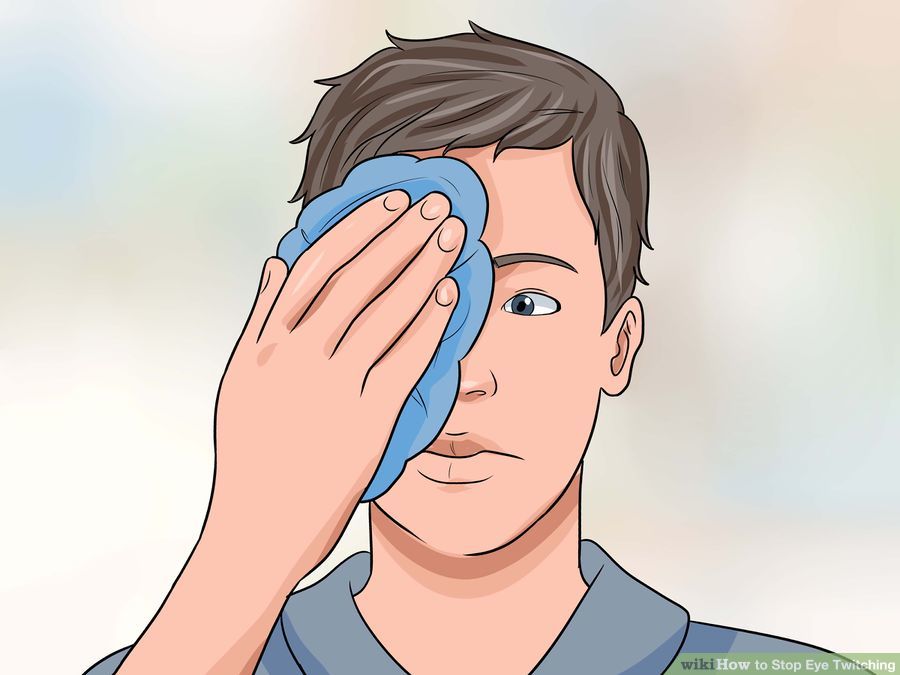What’s the most common cause of eye twitching? Stress. Crazy, right? Other culprits include: dry eyes, exhaustion, eyestrain, coffee, medications, and too much alcohol. No matter the cause, there are a few tricks to stop the twitching in its tracks.
Method 1
Begin with blinking vigorously. Squeeze your eyes shut and then pop them wide open. Repeat this process until your tear ducts get involved and your eyes start to water. Of course you should stop immediately if you ever begin to have pain or the twitching becomes worse. The idea behind this method is that it allows you to hydrate your eyes your eye and facial muscles a good stretch.
Method 2Relax your eyes with an eye massage. Lightly massage your bottom eyelids in a circular motion using your middle fingers. Massage the lid of the twitching eye for approximately thirty seconds. To prevent irritation or infection, be sure your hands and face are clean first. This method has shown results with increasing circulation as well as stimulating and strengthening muscles.
Method 3
Blink for thirty seconds. Try to do this with adequate speed. You should also make the movements very light. Imagine that your eyelashes are butterfly wings. The process of blinking is extremely important to your eyes. It relaxes most of the eye muscles, as well as lubricating and cleansing the eyeballs, which can stop the twitching. Stop immediately if you experience pain or if the twitching becomes significantly worse.
Method 4
Close your eyelids halfway down. You will notice that your upper eyelids constantly tremble with different amplitude. Concentrate your efforts on stopping this trembling.
By squinting and helping visual acuity, you place less strain on the eyes. This may help a twitch resulting from a tired eye.Method 5
Exercise eyes with eye squeezing. Close your eyes for one full minute. During this time, squeeze your eyes shut more tightly then release without actually opening them. Perform three repetitions before opening your eyes. This exercise can lubricate eyes by increasing tear production. In addition to helping with twitching, you can use the exercise to keep eye muscles strong.
Method 6
Give yourself an acupressure massage. Locate the acupressure points around your eye. Massage each point lightly in a circular motion for 5-10 seconds before moving to the next. Once you finish the sequence, start again from the beginning. Repeat for approximately two minutes.
For a similar acupressure technique, place your index and middle fingers on your eyebrows. Press gently and rotate them on the edges of your eye socket bone for five minutes.Acupressure methods help eye twitching by increasing circulation to the eye while the closed lid allows tear film to hydrate the eye.
To prevent irritation or infection, ensure your hands and face are clean first.Method 7
Try eye hydrotherapy techniques. Alternate between splashing your closed eyes with cold and then warm water. The cold water will constrict blood vessels, and the warm water will dilate the same vessels. This process will help increase circulation and blood flow to the eye, which can help with twitching.
You can also run a wet ice cube over the eyelid before splashing with warm water as opposed to alternating between warm and cold water. Repeat the process 7-8 times.
Method 2
Addressing Possible Causes
The most important thing you can do to get of eye twitching is to cut back on the things that cause them. These means cutting back on stimulants like coffee and soda. Your medication may also be playing a role, but always speak with your doctor before making any adjustments.
Make sure you’re drinking plenty of water (8-10 glasses a day).
Sleep between 7-8 hours a night. Avoid screens prior to bedtime in order to get a better night’s rest.
Visit your eye doctor, especially if your twitching goes on for longer than a week, your twitching causes your eyelid to shut completely, or you experience spasms that are bringing other facial muscles into play. Other signs you need to head to a specialist: redness, swelling, or discharge, drooping upper lid, headaches, and double vision. Your doctor can provide you with insight and treatment options that can provide you with much-needed relief.
Check out wiki how to learn more about stopping eye twitching.

Hailey Kirk